
I once had a client reach out to me and tell me that I was “the only person who could bring his vision to life.” Foolishly I took this compliment and battled away at his design. There were so many red flags I chose to ignore (the client saying “I’ll know it when I see it” was one of them), but I carried on regardless. After many iterations that all matched his extremely loose brief, he said that I “wasn’t the designer he thought I was” and started to attack me personally because I couldn’t “read his mind.” For a very long time I never used to have any sort or formal contract in place and luckily it never bit me in the bum too bad. All it takes is one bad client to ruin a perfectly good day. The knock-on effect that a challenging client can have on your other projects, and your mindset, can be very damaging and counterproductive. When working with a client there are a couple of ways you can protect yourself, and it’s up to you how you want to roll with it. I recommend having at least one of these protections in place, since it will give you the peace of mind needed to do your very best work. On the rare occasion the project goes south, you’ll be protected. LITTLE TIP If you have a bad feeling about a project, or about the person or people running that project, do not get involved. You have those feelings for a reason, and you have to trust your gut. Don’t make a rash decision, though—ask if you can get back to them in 24 hours, and then make the right call for you. The standard working arrangement for designers is to request 50 percent up front and the remainder on completion of the job. No matter what process you want to follow, make sure you receive the final payment before sending the final logo files. This is a document that describes the work requirements for a specific project along with its expectations. This defines the project timelines, deliverables, and working terms and conditions, and it should be signed by the client. I include both of these practices in my process, and they provide both me and the client with clarity on the project. For the deposit, I ask for 75 percent up front and the rest on completion due to my specific process, which I’ll explain in more detail over the following pages. This is an ample amount of protection for a logo designer. You can go crazy and get big contracts written up if you feel that’s a direction you want to take, but I think that’s a little overkill. If you want to draw up legal documents, make sure you seek proper legal advice and not just grab information off the internet. Having your working terms and conditions available on your website is another good practice. When I send invoices, I include a link to the terms and conditions on my site. “PROTECT THE ASSET: YOU

GET A DEPOSIT

STATEMENT OF WORK (S.O.W.)

YOUR EARS ARE MORE IMPORTANT THAN YOUR MOUTH.
”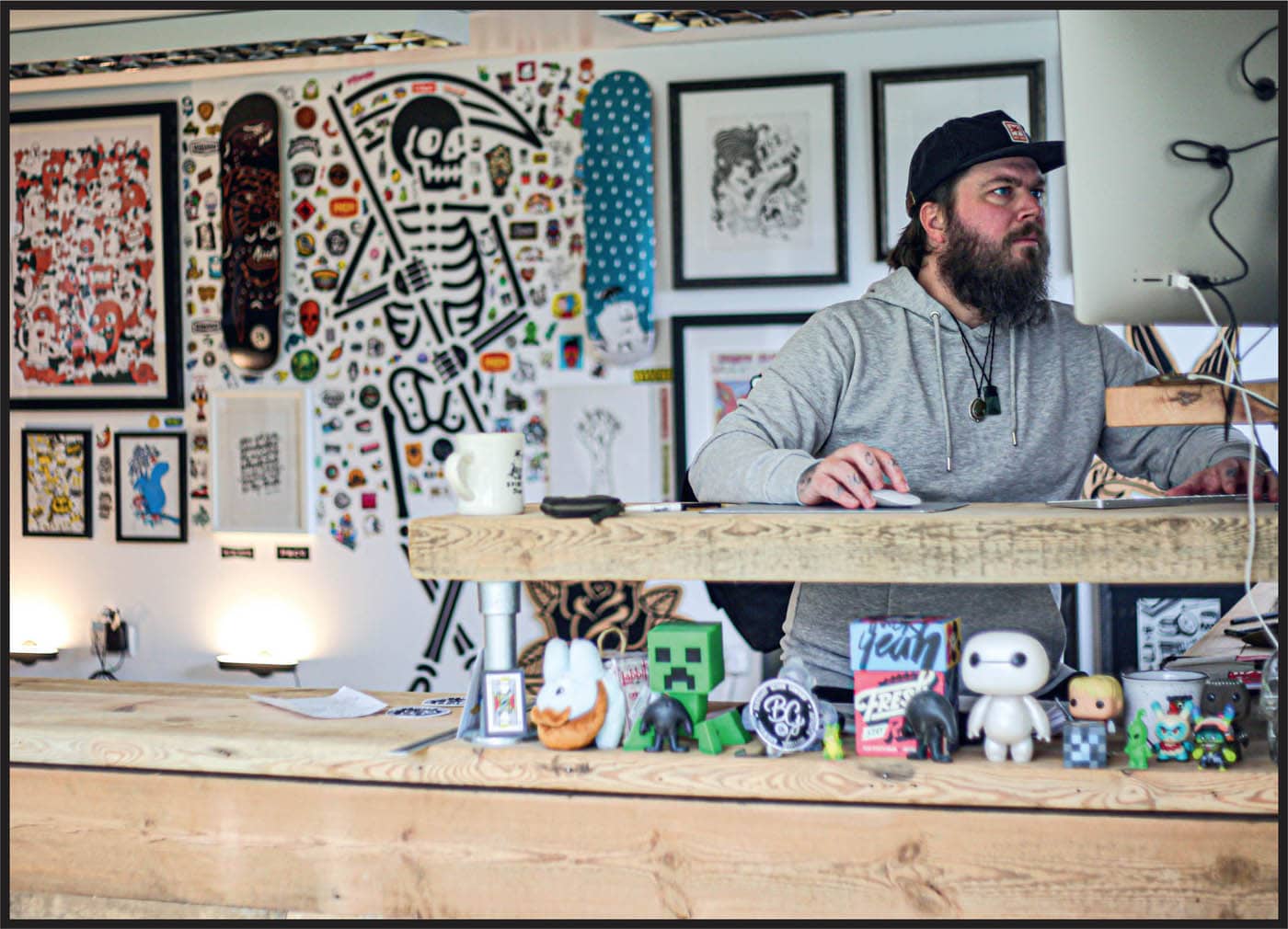
I always find the term “discovery call” hilarious, since it makes me feel like I’m going on some sort of wild expedition or even flying to the moon, when all I’m doing is jumping on a phone call. But we creatives love to make things sound cooler than they are. The discovery call is a very valuable part of the process, and the part that sets the tone for everything to come. I love jumping on a videoconference call with my clients because I like chatting to the people I work with, and I can start to gauge their personality and body language when they talk about the project. I’m able to read their reactions to my questions, and I can get a sense of their character and passion for the project. Before the call is scheduled I always ask my clients to provide two things: This information allows me to have prior knowledge about the company from the people who run it. Since they’ve supplied these assets, I know that everything I’m reading and looking at is accurate, and nothing has been miscommunicated. LITTLE TIP Your ears are more important than your mouth, so letting your client talk you through their thoughts and ideas is important. Don’t be one of those designers who constantly butts in. You can get so much information by listening intently. This process also reduces the guesswork that a Stylescape can sometimes create. A Stylescape is a design tool that communicates and guides the visual language of a project and is usually put together by the designer, not the client. Before the call I have a good idea of what the company does, what makes them different, and what type of aesthetic they prefer. This is all fantastic information that we can discuss. I let the client lead the conversation on the call and give them the opportunity to talk me through their brief and mood board, and I let them know I’ll ask questions along the way, allowing me the opportunity to listen clearly to what they’re saying. During the discovery call, I also talk the client through my entire process. This is a great time to be transparent about the way you work, which is key. You’re emphasizing again that you are in control of the process, and always remind them that if they have a design problem, you’re here to find the solution. Ninety percent of your clients will be positive and happy there is a process, and they’ll be more than happy to run with it. The other 10 percent may need a bit more convincing—but if they don’t like your process, return their deposit and wish them the best of luck. This is a true red flag that indicates they want to be in control, and the project will go sideways quickly. Trust me, I’ve been there.THE DISCOVERY CALL
![]() A MOOD BOARD: In simple terms, this is a visual presentation consisting of images that serve as inspiration for the project. This can be sent via email, or most often I’m sent a Pinterest board.
A MOOD BOARD: In simple terms, this is a visual presentation consisting of images that serve as inspiration for the project. This can be sent via email, or most often I’m sent a Pinterest board.![]() A DESIGN BRIEF: This is a document that details the parameters of the project and can include information such as the company’s name, a description of the business, the company’s values, its target markets, and any other information that tells me about the entire company. (See more about clients and design briefs on this page.)
A DESIGN BRIEF: This is a document that details the parameters of the project and can include information such as the company’s name, a description of the business, the company’s values, its target markets, and any other information that tells me about the entire company. (See more about clients and design briefs on this page.)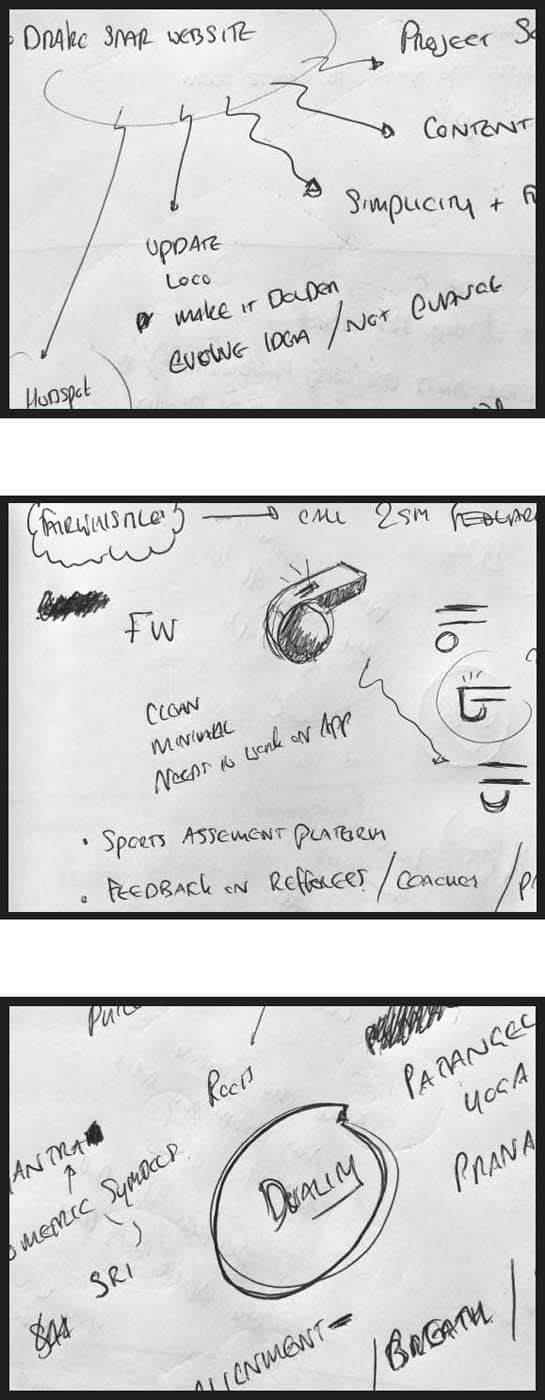

The most important thing to remember when working with clients is that they have hired you. You’re the expert in this field of work, and you should take the reins and be in control of the process. The primary reason for a job going wrong is often because the designer isn’t in full control of the project. Putting the blame on the client is easy, but you have likely allowed the client to take control of the process. Your process and the decision to be transparent about it are the two most important assets you have at the beginning of any project—apart from your beautiful, creative brain. Being open and honest about the way you work is the catalyst for being in control. Lay out the foundations and process of how you work from the beginning, whether you communicate via email, phone, or video conference. Don’t waste time communicating back and forth with the client before discussing these key elements: THE PRICE: When a client reaches out to me for a logo design, I first let them know my pricing structure. By doing this I avoid wasting time on people who don’t have the right budget. MY PROCESS: I explain my logo creation process so there is no ambiguity about how I come up with ideas. TIMELINES: I always let the client know when I’ll start to work on the project and how long it will take. This stops any “I need it tomorrow” nonsense. Being in control of deadlines allows you to work efficiently and, more importantly, avoid burnout. LITTLE TIP Build in extra time to your delivery schedule for every project. You need time to reflect on your decisions, and you also need a buffer for unexpected events. Don’t put unnecessary pressure on the process. If a job takes two days, tell the client you’ll deliver it in a week. Give yourself time to breathe. Some people won’t like your approach and will want you to work a certain way or stray from your process. You have the power to make one of two moves: This may sound a little “It’s my way or the highway,” but to grow as a creative you need to save your creative powers for the right people. If they don’t trust you to do your job, then wait for the people who do.BEING IN CONTROL AT ALL TIMES

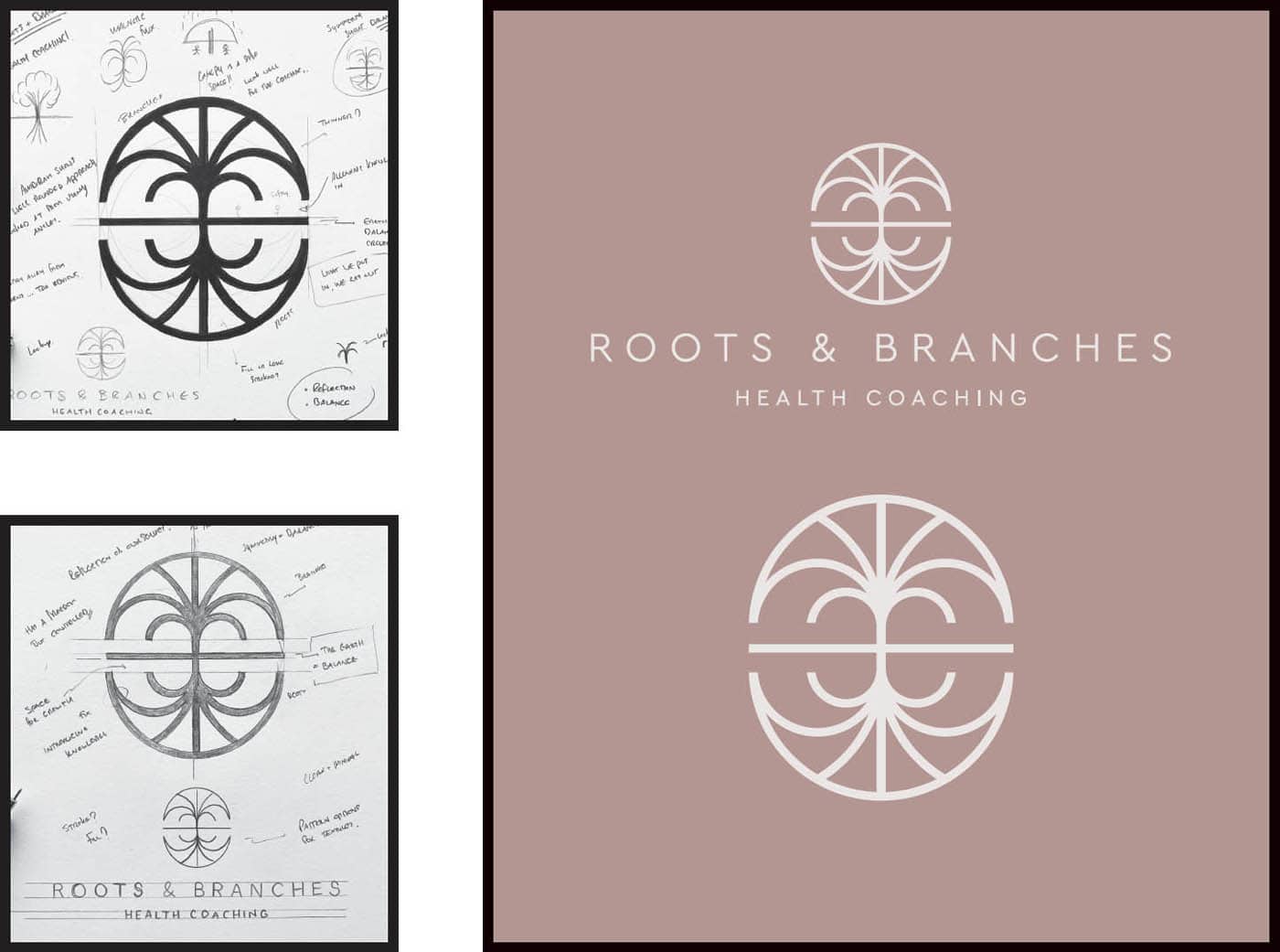
Language is an underestimated asset to a designer and can mean the difference between a winning or losing design concept. Using the right language when communicating can positively reinforce your message and validate your decision making. Take this statement, for example: “I ABSOLUTELY LOVE THIS LOGO DIRECTION. I THINK IT WILL WORK FANTASTICALLY FOR YOU AND YOUR BRAND.” At first glance you may think there’s nothing wrong—the words sound positive, energetic, and convey a positive thought process. Now, read this version: “I ABSOLUTELY LOVE THIS LOGO DIRECTION. IT WILL WORK FANTASTICALLY FOR YOU AND YOUR BRAND.” Saying “I think” when selling an idea to a client implies that you’re questioning yourself. The words may seem harmless and conversational, but they could be the reason your design doesn’t make the cut. As soon as you say “I think,” you allow the client to also doubt your concept. In this example, the statement “I think” could be changed to “I know.” This creates a positive reinforcement of your point and shows confidence. The next time you create an email or document where you’re selling a direction, pitching an idea, or persuading a client to work with you, make sure the language you use doesn’t imply you’re second-guessing yourself. I still check my correspondence all the time, as that language still sneaks into conversations from time to time. LITTLE TIP I’m seriously bad at spelling, so I read my emails a few times before sending them. This gives me a chance to check the grammar and spelling, and I can also remove any semi-positive or negative phrasing that could give a client less confidence in my ability. Clear correspondence that’s free of errors allows you to come across as diligent and professional.THE IMPORTANCE OF LANGUAGE

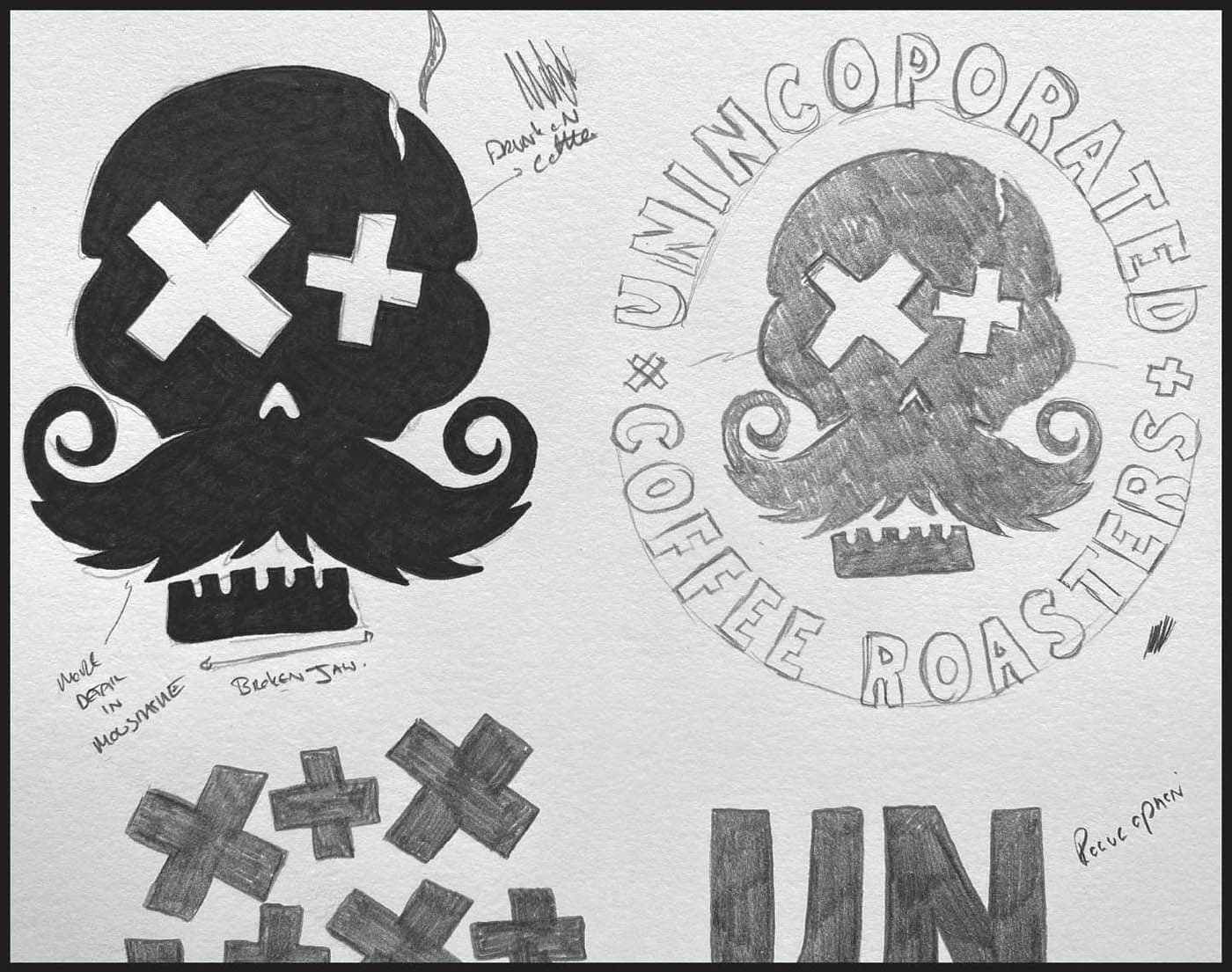

People have always struggled with appropriately pricing their work and have had to deal with the constant noise about the subject. Remember that the information you read is based on another person’s experiences—they figured out what worked for them from experience and probably by getting it wrong most of the time. I know that’s how I learned. So many factors are involved when it comes to figuring out how to price work, including work process, the target market, overhead costs, experience, and deliverables, just to name a few. This is why there’s no one-size-fits-all scenario when it comes to pricing. The process involves constant trial and error and knowing how to use your knowledge to your advantage. Being slightly older and a little wiser on the subject than I was when I started, I better understand how the industry works. I have a good grasp of what my target market is willing to pay, and just as importantly, what I’m comfortable earning. Nailing down your value proposition as a creative is a massive contributor to figuring out pricing. If you don’t know your professional skills and what services you offer, what makes you unique, and who your client base is, how on earth can you create a solid pricing structure? These three questions can help you determine your value: Research other companies online and find their value propositions. This will help you gauge the power of this exercise. This will also help you figure out your pricing and give you a reliable guide for your career. You can then establish your personal mission or create a mission statement. Here is mine: “ Once you know your value and mission you can begin to understand the best way to accurately gauge your price point for the creative services you provide. Your process is the biggest factor in pricing a logo. I have the same process regardless of the client—I know how long it takes me to read a brief, do the word mapping, come up with ideas, and execute a cool design. Knowing my process well allows me to understand my timeline so I can accurately price jobs. Here is a simple pricing formula that worked for me when I started out:
Pricing isn’t difficult when you understand that the key fundamentals are time and process. You don’t need complicated formulas; you just need to understand simple math. Over time, and with the right experience, you can move into a more value-based scenario for pricing. This includes variables such as your experience, the advantages you bring, and the value your work brings to the client and their product. Here’s a good example of this: Imagine the cost of a sketchbook, a pencil, and a pen—not a huge amount of money. Imagine Banksy creating art with those materials. Now it would be worth a small fortune. Banksy’s name, experience, and other factors bring huge value to his work. In time, you’ll also gain clout in your industry, but you have to start somewhere. Keeping it simple in the beginning will bring clarity. Always remember that the biggest killer of success is greed. When the right project comes along I’m always open to a bit of wiggle room in pricing. I may make a little less profit on a project, but I’ll have an epic piece of work out in the world that will bring me more work. Knowing your worth is important, but as a creative, recognizing opportunities and thinking about the long game are the real skills. LITTLE TIP Understanding the time it takes to complete certain tasks is important. As the saying goes, time is money. Logging your time on a project allows you to understand your efficiency and effectiveness. Also, be aware of the daily costs to run your business, such as rent, supplies, insurance, equipment, electricity, maintenance, etc. These should be factored into your pricing as well. We’ve all been there—we start chatting with a client about a new project, explain the process, get to the part of the conversation about timelines, and they say they need the work finished for a conference they’re attending the following week. (I’m always amazed how some of these people succeed in business; this disorganized work style must be super stressful for their colleagues and the people around them.) I typically suggest they find another designer, since I don’t need the hassle and the project usually doesn’t excite me enough to get involved. But sometimes a supercool human comes along with a supercool project, and I need to make it happen. This is where I like to incorporate rush fees. A rush fee is an amount of money added to a project’s regular price that allows it to become your priority. If a client needs me to drop everything to get their work done in an unreasonable amount of time, I double my fees. The extra amount lets me accept working at unusual times, put in longer hours, and feel the effort is worth my while for a short period of time. Don’t mistake greed for savvy business decisions.PRICING YOUR WORK
MY MISSION IS TO PROVIDE MY CLIENTS WITH ICONIC AND MEMORABLE IDENTITY SOLUTIONS THAT THEY CAN STAND BEHIND TODAY, USE TO REACH THEIR GOALS, AND HELP GUIDE THEM IN THE FUTURE.
”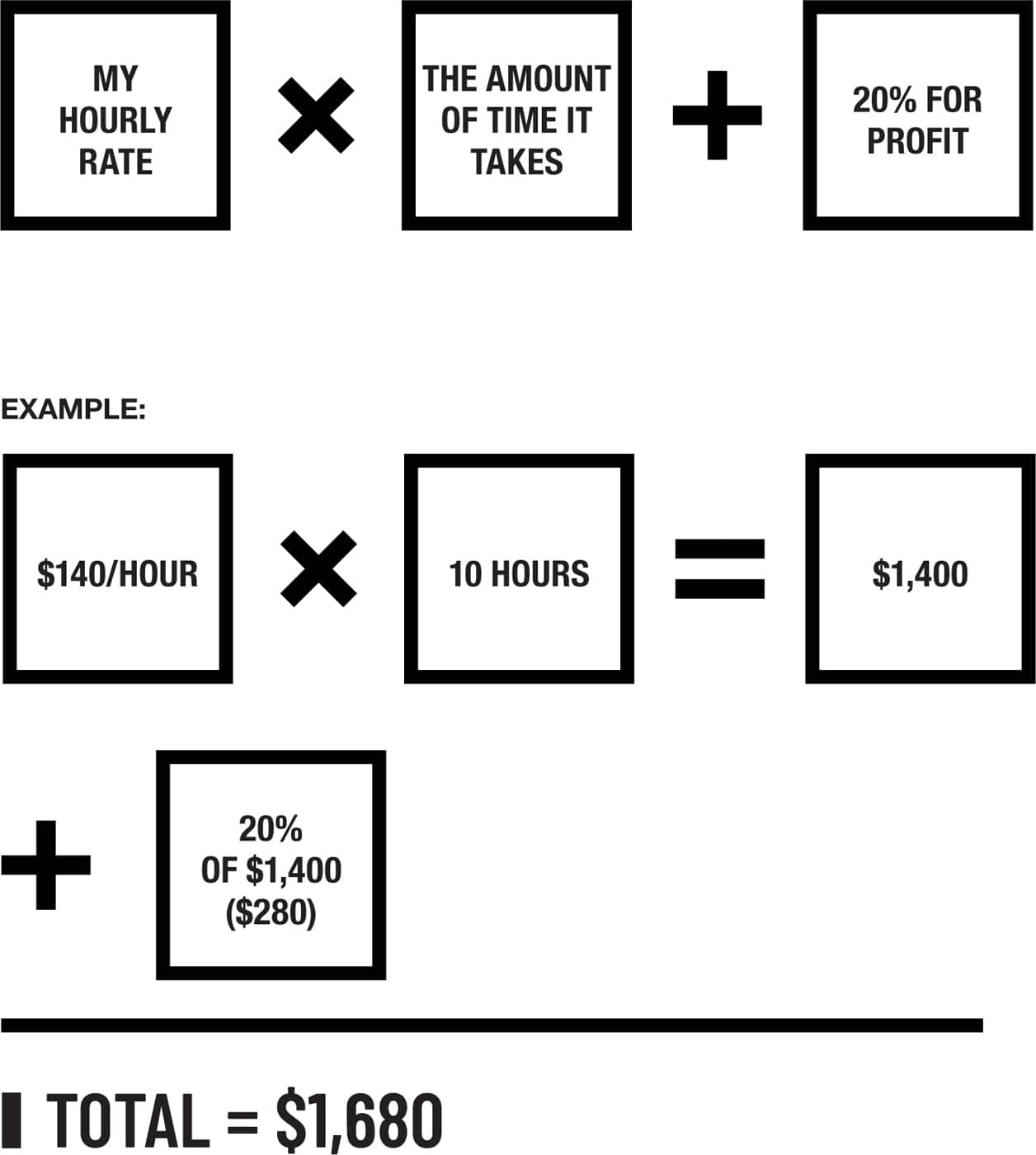

THE VALUE OF RUSH FEES



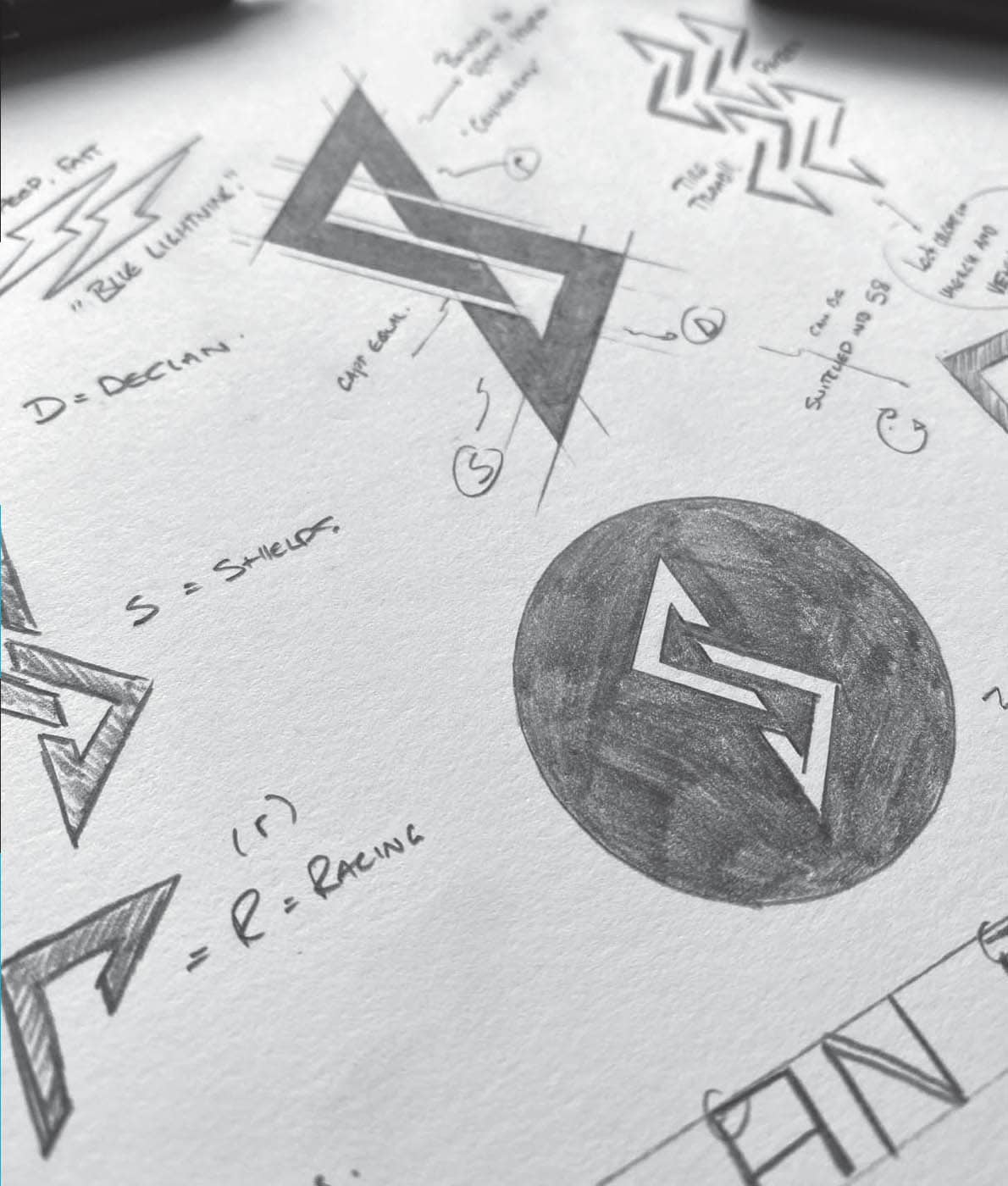
No matter how much you prepare, there will always be a random moment when a random project goes randomly wrong. That’s life, and sometimes stuff doesn’t go the way you expect it to. I’m sure you’ve been in a situation where everything is going well, and the client sounds satisfied and happy so far. Then—whammo! All of the toys are chucked out of the pram and the world seems to implode. You’re left wondering what on earth just happened. Everyone who can relate to this, raise your hand. Often the implosion has nothing to do with logo design—it’s just life. You never know what’s going on in the background. Sometimes aspects of people’s lives affect their work, and this can impact their mood, behavior, reactions, and judgment. Remaining calm and not overreacting are the best things to do in this situation. I’ve done the opposite and achieved absolutely nothing, apart from creating headaches, anxiety, and lack of sleep due to worry. This is where your process becomes your friend. If you have the deposit and statement of work sorted, then you are still in control. You just need to fix the situation. If a client isn’t happy with your design direction, then this is a great time to ask some questions. Focus—don’t get drawn into a he said/she said scenario. Work with the facts and communicate clearly. You might say something like this: “
If you and the client aren’t seeing eye to eye on a design direction, then jump on another call and face the challenge. Run the client back through their brief and mood board and ask why they feel the design doesn’t match their vision. Open and honest conversations with your client are important, even when you feel the client is wrong. Remain polite and professional and remember that things aren’t as bad as they seem in the moment. Also, be open to the possibility that you may be the one in the wrong. Ask yourself what you may have missed, what you could have done better, and how you can resolve the problem. The next time you’re in a situation where things are not going according to plan, stop, breathe, and get on a call with your client. Realign your brain and facilitate an open discussion on how you both can get this project over the line. Most issues can be fixed with honest conversations. LITTLE TIP Never email your clients first thing in the morning if they’ve contacted you about a problem. Allow your brain to wake up, then grab a coffee and read for 20 minutes or go for a walk. Holding back an impulsive answer is always a good idea, especially when you’re not awake enough to make a good judgment call. Read the email properly and then breathe. Now you’re ready to communicate efficiently.WHAT HAPPENS WHEN THINGS GO WRONG
I CAN UNDERSTAND YOUR FRUSTRATION, BARRY, BUT REMEMBER THAT EVERYTHING IS FIXABLE. WHAT WE NEED TO DO IS FOCUS ON WHAT ELEMENTS YOU LIKE AND DON’T LIKE. THIS WILL ALLOW ME TO DEVELOP MY IDEAS.
”


To this day I have the odd client who doesn’t like the work I create for them, and that’s fine. As long as they offer constructive feedback that helps me with my development process, I’m actually excited to continue working on the project. When this happens, my mind goes straight into competition mode with myself and I want to create something even better for them. Another type of client may be openly rude about the work, without any real agenda, and make negative comments at every possibly opportunity. This isn’t your fault—they could be going through some things that they’re now burdening you with, so stay professional and don’t let it get you down. We’ve all had bad days, and your first thought should be that they may be struggling with a personal issue. Here are some easy ways to defuse difficult situations:HOW TO DEAL WITH NEGATIVE CLIENTS

![]() GIVE THE CLIENT SOME SPACE: Let them know that their reactions aren’t making your work easy or helping the process. Suggest they take some time to think over the design. Often, time offers healing and clarity.
GIVE THE CLIENT SOME SPACE: Let them know that their reactions aren’t making your work easy or helping the process. Suggest they take some time to think over the design. Often, time offers healing and clarity.![]() KILL THEM WITH KINDNESS: Sometimes another person’s passion and excitement can help someone realize they’re being unhelpful.
KILL THEM WITH KINDNESS: Sometimes another person’s passion and excitement can help someone realize they’re being unhelpful.![]() BRING IN SOME CRAZY FOCUS: Ask the client definitive questions that require a one-word answer. Do you like the color? Do you want a logo mark? Although you’re not opening enough dialogue to continue the project, you’re getting them to think.
BRING IN SOME CRAZY FOCUS: Ask the client definitive questions that require a one-word answer. Do you like the color? Do you want a logo mark? Although you’re not opening enough dialogue to continue the project, you’re getting them to think.
